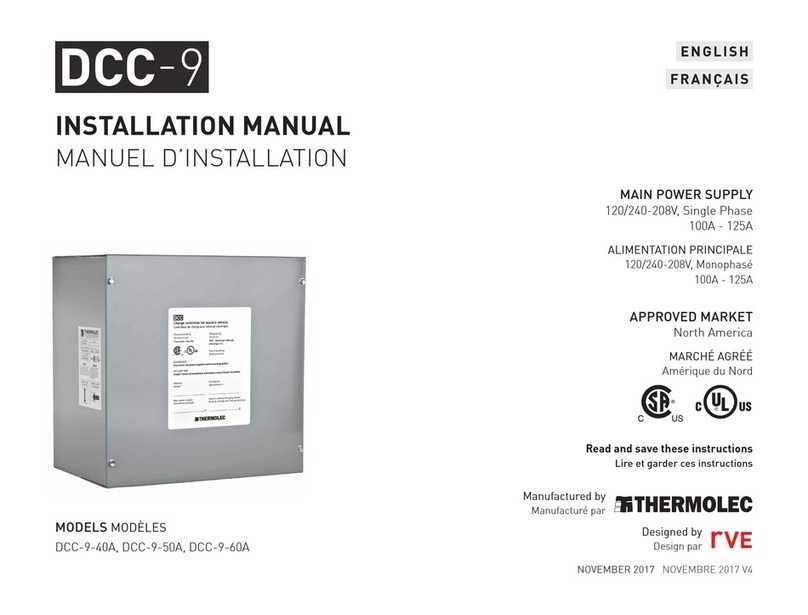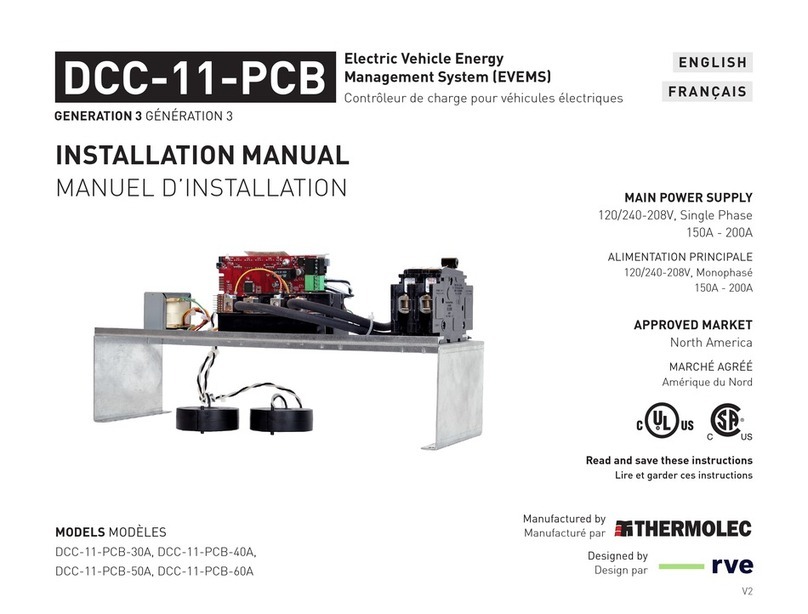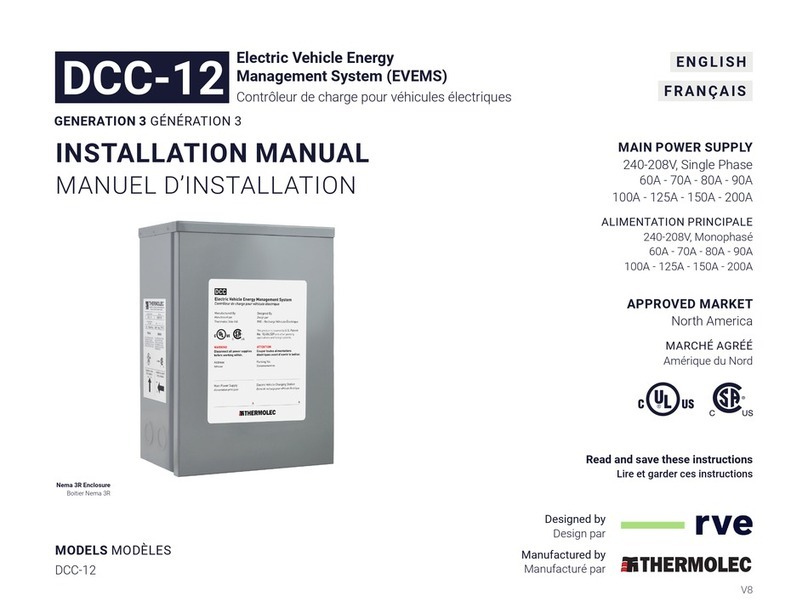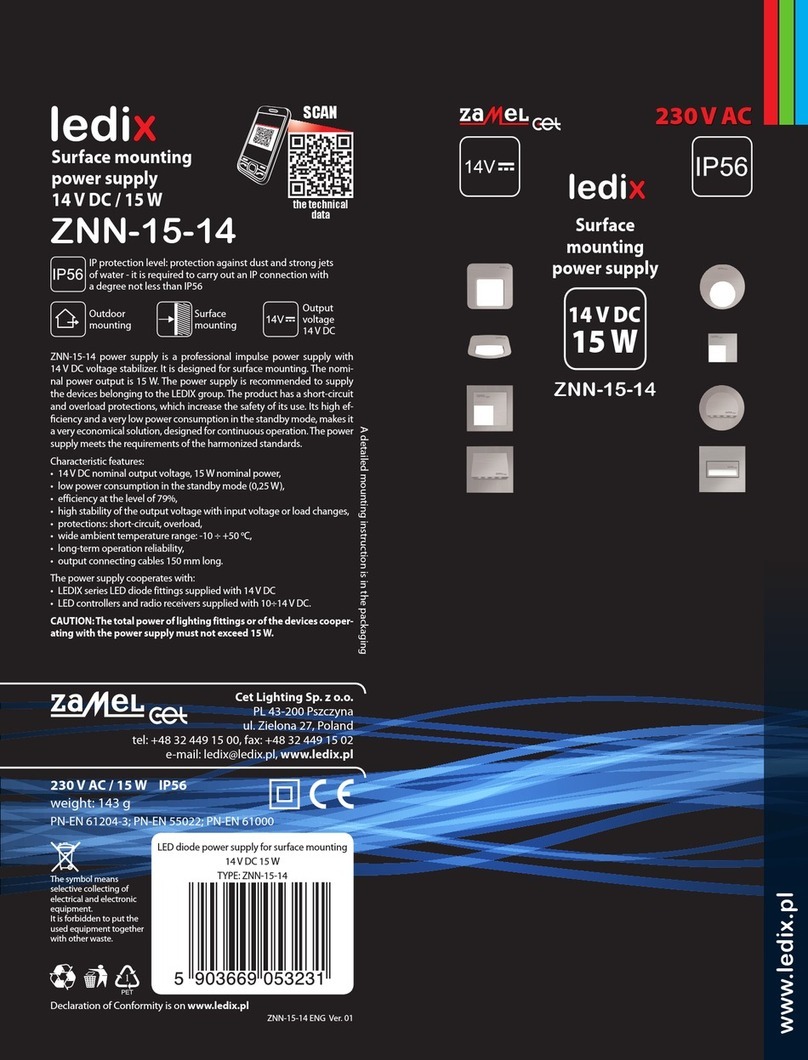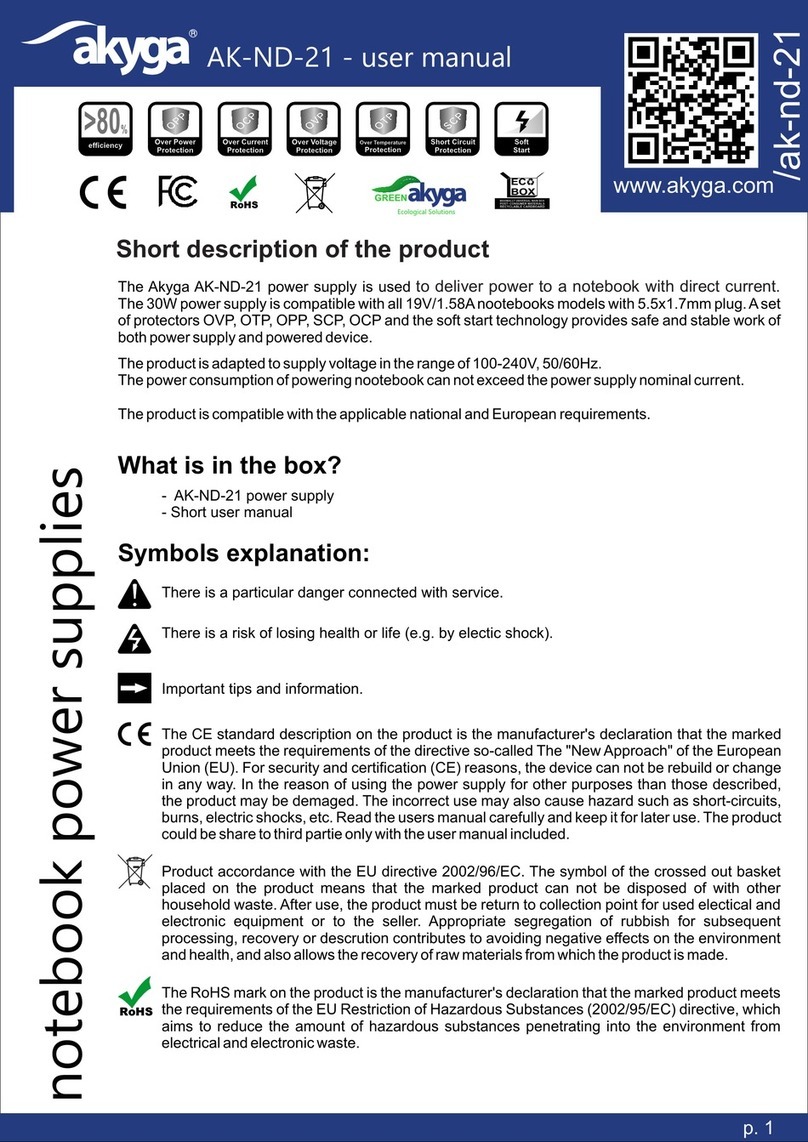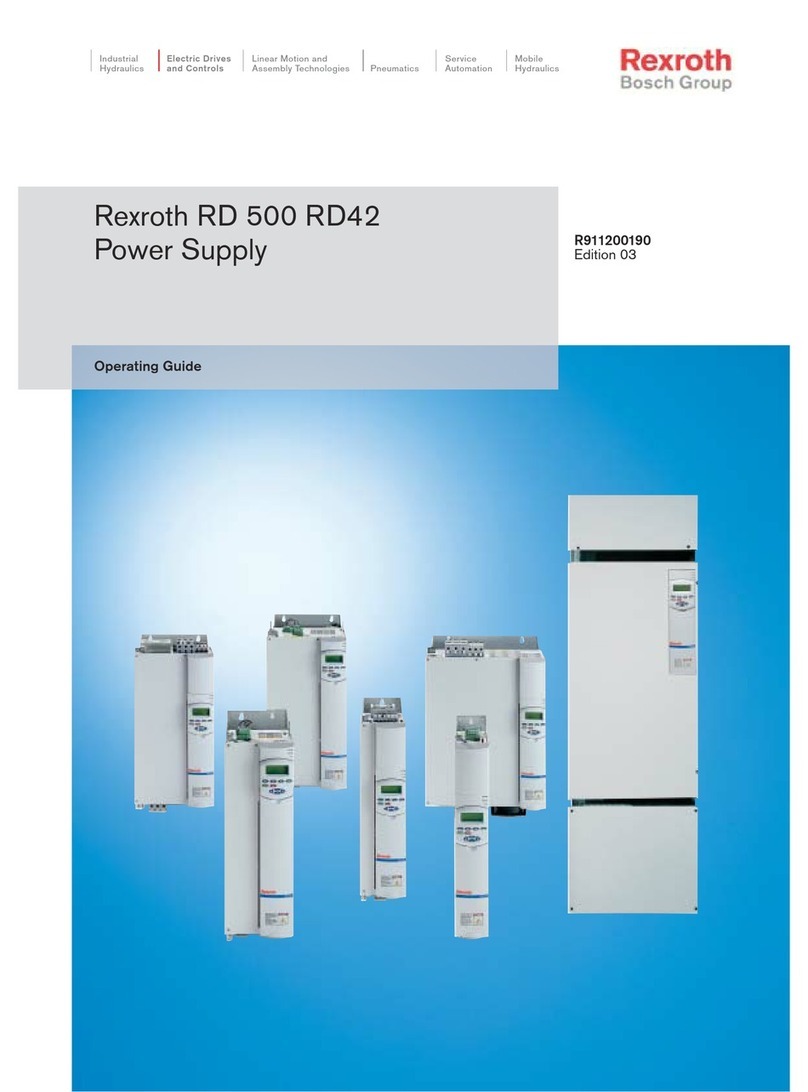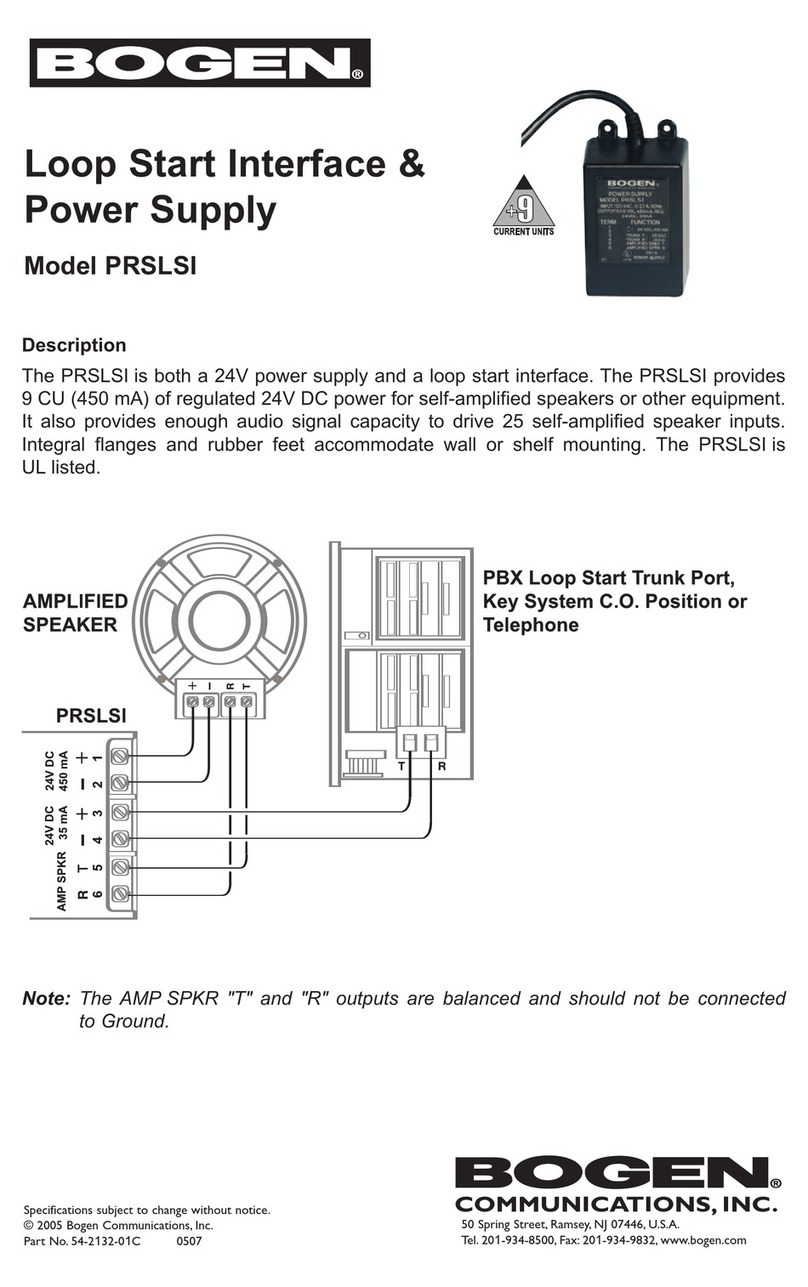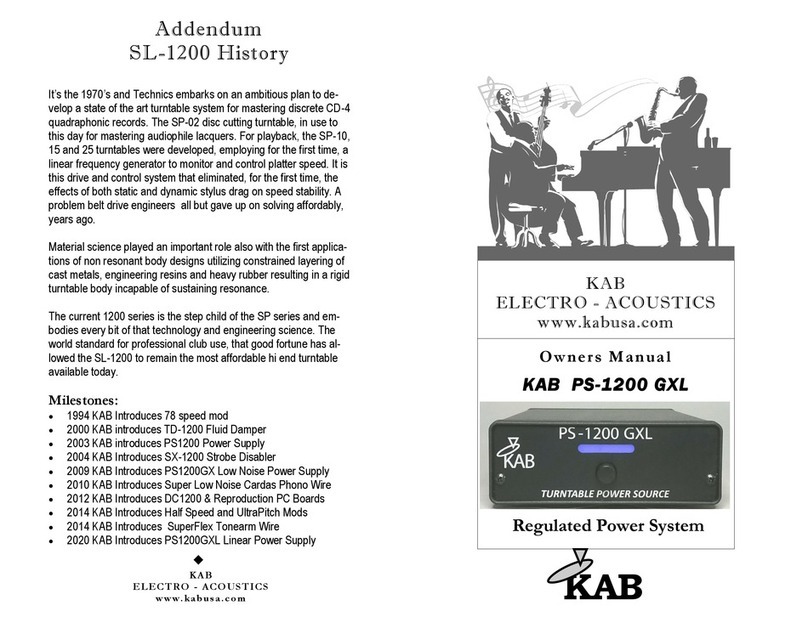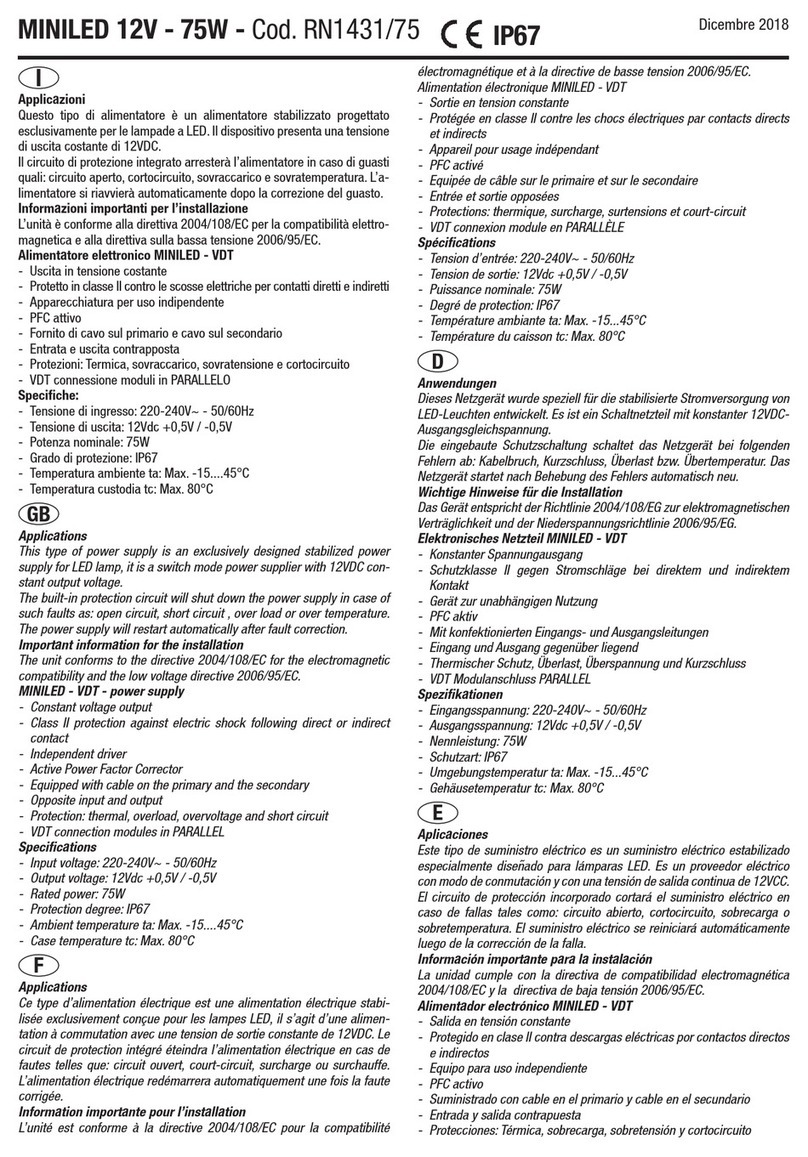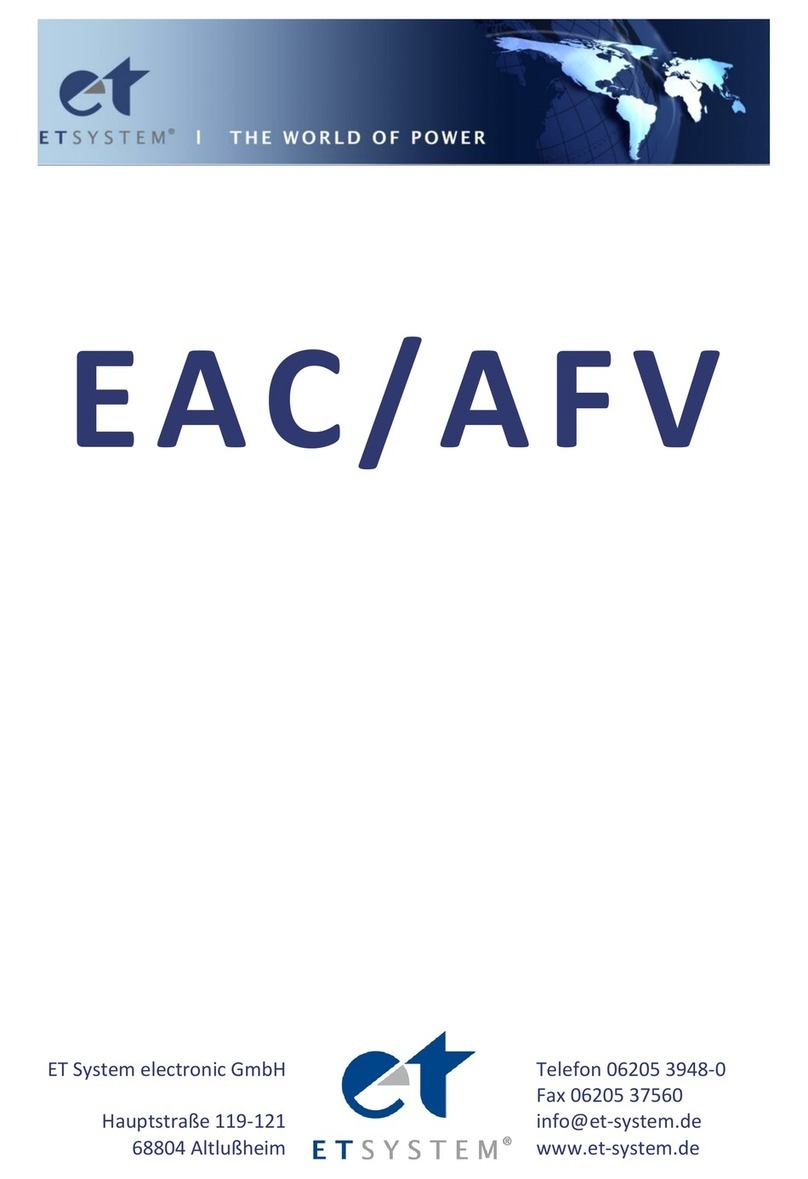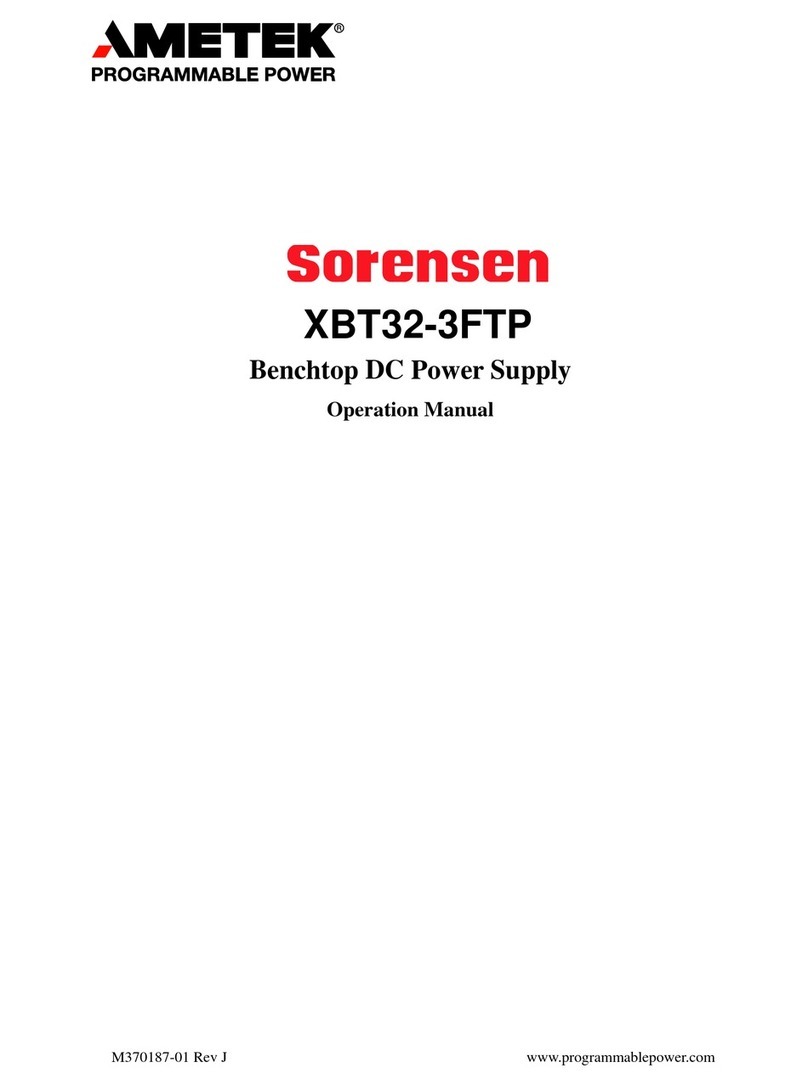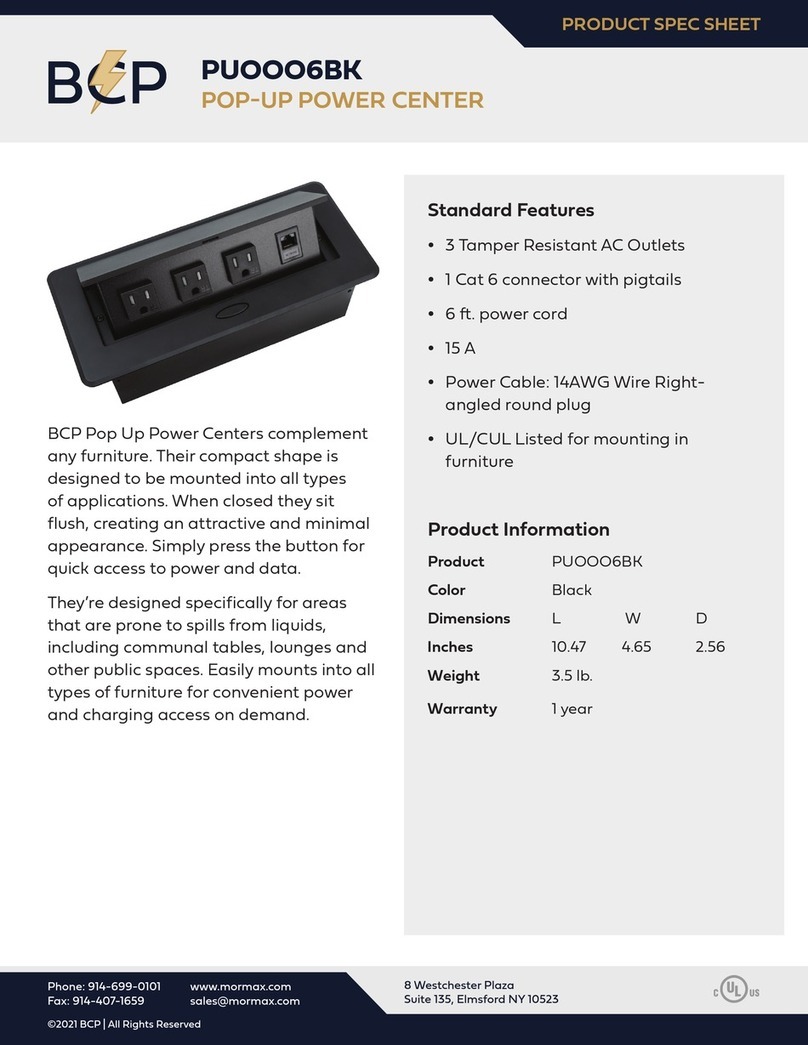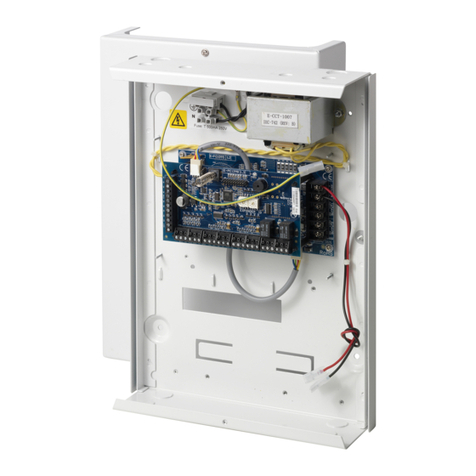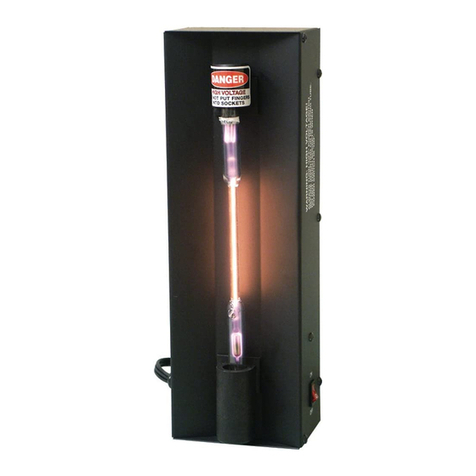Thermolec DCC-10 series User manual

1
INSTALLATION MANUAL
MANUEL D’INSTALLATION
MODELS MODÈLES
DCC-10-30A, DCC-10-40A, DCC-10-50A, DCC-10-60A
Manufactured by
Manufacturé par
Designed by
Design par
MAIN POWER SUPPLY
240/208V, Single Phase
60A - 70A - 80A - 90A - 100A - 125A - 150A - 200A
ALIMENTATION PRINCIPALE
240/208V Monophasé
60A - 70A - 80A - 90A - 100A - 125A - 150A - 200A
APPROVED MARKET
North America
MARCHÉ AGRÉÉ
Amérique du Nord
AUGUST 2018 AOÛT 2018 V6
ENGLISH
FRANÇAIS
Read and save these instructions
Lire et garder ces instructions

2

3
TABLE OF CONTENTS
About this manual 3
Safety information 4
Specifications 4
Characteristics 5
Typical installation 5
DCC installation 6
Application 9
Maintenance 9
Lights code 9
ENGLISH
ABOUT THIS MANUAL
Errors and inaccuracies
For any inaccuracy or omission, or to forward any general comments
or suggestions concerning the quality of this manual, please send an
email to info@dcc.technology.
Copyrights and Trade Names
All information’s in this manual are subject to copyright protection
and other intellectual property protection of THERMOLEC LTÉE. /
RECHARGE VÉHICULE ÉLECTRIQUE and its licensors. This installation
manual cannot be modified, reproduced or copied without a prior writ-
ten authorisation from THERMOLEC LTÉE. / RECHARGE VÉHICULE
ÉLECTRIQUE and its licensors. Additional information’s are available
on request. The following logos are trade names or trademarks of
THERMOLEC LTÉE. / RECHARGE VÉHICULE ÉLECTRIQUE in the
United States and in Canada.
The DCC – Charge controller for electric vehicle
All other trade names mentioned in this document are the property of
their respective owners and their uses in this manual does not means
a sponsorship or approval of the product. The use of any trade name
shown in this document is strictly forbidden.
In this document, the terms DCC – Charge controller for electric vehi-
cle and DCC are equivalent.

4
SAFETY INFORMATION
This document describes important safety instructions which must be
followed during installation, maintenance and application of the DCC –
Charge controller for electric vehicle.
Warning
Read all instructions prior using this
product.
Always disconnect the DCC – Charge
controller for electric vehicle power sup-
ply before any works.
Use only the DCC – Charge controller for
electric vehicle by following the technical
specifications indicated in this installation
manual.
Do not install the DCC – Charge controller
for electric vehicle nearby inflammable
materials, explosives or fuels, chemical
products and vapors.
Do not install the DCC – Charge controller
for electric vehicle outdoor.
Never spray the DCC – Charge controller
for electric vehicle with water or any other
liquids.
DCC – Charge controller for electric
vehicle Stop using the DCC – Charge
controller for electric vehicle immediately
if defective, cracked, broken or damaged.
Never try to modify, repair or dismantle
the DCC – Charge controller for electric
vehicle. Please contact the manufacturer
for any malfunction.
Never insert a sharp object inside the
DCC – Charge controller for electric vehi-
cle at the risk of causing damages to the
components.
Any improper use of the DCC – Charge
controller for electric vehicle could result
in serious injuries which may cause
death.
For a vertical installation on a wall, refer
to the information’s on the enclosure for
the choice of mounting position.
Precautions
Any improper use of the DCC – Charge
controller for electric vehicle can cause
damages and premature wear of the com-
ponents, which voids the warranty.
Never use the DCC – Charge controller
for electric vehicle above or below the
temperature range of 32 °F to 113 °F (0
°C to 45 °C).
The installation of the DCC – Charge
controller for electric vehicle must be
done in accordance with the latest electri-
cal code requirements.
Notes
It is recommended to schedule the char-
ging of the vehicle during hours of low
electrical consumption to minimize inter-
ruptions to the electric charging station.
Always check that the DCC – Charge
controller for electric vehicle is adequa-
tely fixed to the wall or ceiling or in a loca-
tion to avoid any damages.
It is the installer’s responsibility to make
sure that the electric power source is
adequate for the use of one or more DCC.
Do not use any cleaning solvents to clean
the DCC – Charge controller for electric
vehicle.
Limited warranty
1 - THERMOLEC LTÉE. warrants the inte-
grated controls against any defects for a
period of one year from the shipping date.
The warranty is limited to the equipment
and components supplier by THERMOLEC
LTÉE.
2 – In case of incorrect installation, inap-
propriate use or repairs done by unautho-
rized personnel by THERMOLEC LTÉE.,
the warranty will be automatically void.
3 - THERMOLEC LTÉE. undertakes to
repair or replace, at site or at the manu-
facturing location, at his option, the
defective material only after an evaluation
made by its representative.
4 - THERMOLEC LTÉE. will not be held
liable for damages or delays and will not
be required to pay transport cost of the
charge controller said to be defective.
5 - THERMOLEC LTÉE. shall not be liable
for any indirect damages or delays caused
by faulty workmanship or materials.
No indemnity will be paid for repairs,
replacements or modifications without a
prior written consent supplied by THER-
MOLEC LTÉE.
6 – Any control device or accessory sup-
plied with the DCC – Charge controller for
electric vehicle to be installed or connec-
ted remotely from the charge controller
will be guaranteed by the manufacturer
only under the special conditions mentio-
ned in paragraph 5.
7 – The components supplied for repairs
are guaranteed for the remaining of the
warranty on the original product or 90
days. The longest period will prevail.
8 – All repairs made at the THERMOLEC
LTÉE. plant are guaranteed for 30 days
from the date of repairs.
SPECIFICATIONS
The DCC – Charge controller for electric vehicle is a safety device with
programmable controller that can protect an electrical distribution
circuit in relation with its main breaker. It will prevent overloading the
electrical distribution circuit by turning off momentarily the power to
the charging station when the demand exceeds 80% of the main brea-
ker rating.
Models Breaker Main power supply
EV charger 60A 70A 80A 90A 100A 125A 150A 200A
DCC-10-30A 30A ✓ ✓ ✓ ✓ ✓ ✓ ✓ ✓
DCC-10-40A 40A ✗ ✗ ✓ ✓ ✓ ✓ ✓ ✓
DCC-10-50A 50A ✗✗✗✗ ✓ ✓ ✓ ✓
DCC-10-60A 60A ✗✗✗✗✗ ✓✓✓
Voltage and wiring 240/208 VAC, single phase: L1, L2, Ground
Dimensions* 11.0” x 11.0” x 4.5” (H” x W” x D”)
Frequency 50 to 60 Hz
Total weight* 12 lb (5 kg)
Operating temperature 32°F to 113°F (0°C to 45°C)
Storage temperature -4°F to 158°F (-20°C to 70°C)
* Approximative and can change without notice.

5
CHARACTERISTICS
Conditions for application
The DCC-10 manufactured by Thermolec is an Energy Management
System specially designed to allow the connection of an EV Charger, in
a house or dwelling, to an electrical panel that is at full capacity and
would otherwise need to have an expensive service upgrade.
Main Power Supply (CB)
The DCC – Charge controller for electric vehicle can be powered by a
240/208V AC single phase source. The following options are offered by
each DCC model:
DCC-10-30A DCC-10-40A DCC-10-50A DCC-10-60A
60A, 70A, 80A, 80A, 90A, 100A, 125A, 125A,
90A, 100A, 125A, 100A, 125A, 150A & 200A 150A & 200A
150A & 200A 150A & 200A
Secondary Load Supply (EVC)
The DCC – Charge controller for electric vehicle will provide power to
a charging station through a 30A, 40A, 50A or 60A 240/208V AC circuit
breaker, L1, L2 and ground. The DCC is equipped with a Square D cir-
cuit breaker (QU0230, QU0240, QU0250 or QU0260).
Trip Percentage (TP)
The DCC - Charge controller for electric vehicle is factory set to turn off
the charging station if the total consumption of a service exceeds 80%.
For other configurations, please contact the factory.
Power outage
In the event of a power outage, the DCC – Charge controller for electric
vehicle restore the power supply to the vehicle charging station when
power returns.
Recovery time (RT)
Following a power cut to the electric vehicle supply equipment (EVSE),
a 15 minutes delay is initiated to monitor the total consumption of the
electrical power system. Power to the vehicle will then be restored if
the total load consumption is lower than 80% of the main circuit brea-
ker rating during a period exceeding the 15 minutes’ recovery time.
TYPICAL INSTALLATION

6
The DCC can be mounted:
- on a ceiling
- on a wall
NOTE: The DCC controller must be mounted so that
the nameplate remains visible at all times.
Do not install the DCC:
- Outdoor
- In a location with high level of risk.
- Nearby inflammable materials, explosives
or fuels, chemical products and vapors.
3. Before installation, check the DCC mounting position.
Wall installation
Refer to the information on the
enclosure to insure proper installation.
STEP 3: INSTALLATION
Ceiling installation
1. Remove the 4 cover screws.
2. Fix the ceiling mounting support on the DCC.
3. Lift the DCC using the ceiling mounting support.
4. Position the DCC at the intended location.
5. Fix the DCC with the anchors for the type of surface.
6. Check that the DCC is adequately fixed to the wall or ceiling.
7. Remove the ceiling mounting support.
Wall installation
1. Remove the 4 cover screws.
2. Position the DCC at the intended location.
I
Warranty automatically void if the DCC is installed incorrectly.
WARNING
Ceiling installation
The installation may be
done in any direction.
DCC INSTALLATION
STEP 1: CHECK THE PACKAGE CONTENTS
1 x Ceiling mounting support
1
INSTALLATION MANUAL
MANUEL D’INSTALLATION
MODELS MODÈLES
DCC-10-40A, DCC-10-50A, DCC-10-60A
Manufactured by
Manufacturé par
Designed by
Design par
MAIN POWER SUPPLY
240/208V, Single Phase
100A - 125A - 150A - 200A
ALIMENTATION PRINCIPALE
240/208V Monophasé
100A - 125A - 150A - 200A
APPROVED MARKET
North America
MARCHÉ AGRÉÉ
Amérique du Nord
JUNE 2017 JUIN 2017 V3
ENGLISH
FRANÇAIS
Read and save these instructions
Lire et garder ces instructions
1 x Installation manual
I
To access our installation video, visit our website www.dcc.technology
1 x DCC
INSTALLATION VIDEO
2 x Current transformer (CT)
STEP 2: PREPARATIONS FOR INSTALLATION
1. Disconnect the main power
2. Select the DCC intended location.
Select an intended location preferably less than 6 feet away from
the electric panel (power source). The current transformers sup-
plied have a wiring of 6 feet in length, but can be extended to 18
feet’s (see the section Step 4: Conductor connexions for the exten-
sion details).

7
3. Ensure that the mounting is according with the information’s
on the enclosure.
4. Fix the DCC with the anchors provided for the type of surface.
5. Check that the DCC is adequately fixed to the wall or ceiling.
STEP 4: CONDUCTOR CONNEXIONS
Consult the diagram on the next page for all details on the cable
connections configuration. This diagram is also found under the DCC
cover.
Current transformers (CT) installation and connections
1. Open the CT.
2. Install the CT around the main power cable of the panel.
3. Check the correct polarity on the CTs.
4. Connect the CT cables to the terminal block, provided for
that purpose, inside the DCC.
Extension of current transformers’s wire
If the DCC is installed remotely from the panel, it is possible to extend
the wiring supplied with the current transformers up to a maximum
of 25 feet.
Additional wire must be 600V rated, minimum 18 AWG (1mm),
4 conductors shielded twisted (ex: FT4 SHIELD. 4C FAS #18
or equivalent).
STEP 5A: DIP SWITCH PROGRAMMING
FOR MAIN POWER SUPPLY
1. Identify the set-up section on the DCC.
2. Set up the section as per the layout corresponding to the main
power supply:
Models Main power supply
60A 70A 80A 90A 100A 125A 150A 200A
DCC-9-30A ✓ ✓ ✓ ✓ ✓ ✓ ✓ ✓
DCC-9-40A ✗ ✗ ✓ ✓ ✓ ✓ ✓ ✓
DCC-9-50A ✗ ✗ ✗ ✗ ✓ ✓ ✓ ✓
DCC-9-60A✗ ✗ ✗ ✗ ✗ ✓ ✓ ✓
STEP 5B: CONFIGURATION OF THE TRANSFORMER
VOLTAGE AT 208V (Only for application at 208V, single phase)
1. Locate the orange cable connected
to the 240V terminal (factory setting).
2. Unplug the orange cable from
the 240V terminal.
3. Plug the orange cable to the 208V terminal.
T
24V
240V
208V
COM
TRANSFORMER
TRANSFORMATEUR
50VA/240/208V
Orange
T
24V
240V
208V
COM
TRANSFORMER
TRANSFORMATEUR
50VA/240/208V
Orange
I
Warranty automatically void if electrical power is supplied to the
DCC and the transformer is not set at the appropriate voltage.
WARNING
STEP 6: STARTUP
DCC power supply
1. Supply electrical power to the DCC.
2. Wait ten (10) seconds.
3. Check if the contactor is switched on.
4. Check the pilot light:
GREEN at all time: compliant installation, go to the next step.
RED: refer to the Lights code section.

8
Main Circuit Breaker (Amps)
Entrée électrique (Ampérage)
Main power supply / Alimentation principaleModels /
Modèles
CONFIGURATION DIAGRAMS / DIAGRAMMES DE CONFIGURATION
OFFON
60A 70A 80A 90A 100A 125A 150A 200A
DCC-10-30A ✓ ✓ ✓ ✓ ✓ ✓ ✓ ✓
DCC-10-40A ✗ ✗ ✓ ✓ ✓ ✓ ✓ ✓
DCC-10-50A ✗ ✗ ✗ ✗ ✓ ✓ ✓ ✓
DCC-10-60A ✗ ✗ ✗ ✗ ✗ ✓ ✓ ✓
Trip Percentage (%)
Pourcentage de débarquement (%)
Reintegration time (Minutes)
Temps de reprise (Minutes)
Trip Delay: 15 seconds (Default)
Temps de débarquement: 15 secondes (Défaut)
EV Charger (Breaker)
Borne de recharge (Disjoncteur)
30A (DCC-9-30A)
40A (DCC-9-40A)
50A (DCC-9-50A)
60A (DCC-9-60A)
80% (Default / Défaut)
15 Min (Default / Défaut)
LÉGENDE
M CONTACTEUR DE CHARGE
DCC CONTRÔLEUR ÉLECTRONIQUE
F FUSIBLE
CB DISJONCTEUR
T TRANSFORMATEUR
CT TRANSFORMATEUR DE COURANT
LEGEND
M LOAD SHED CONTACTOR
DCC ELECTRONIC CONTROLLER
F FUSE
CB CIRCUIT BREAKER
T TRANSFORMER
CT CURRENT TRANSFORMER
IMPORTANT
Suivre les codes électriques
nationaux et locaux ainsi que
les instructions contenues
dans l’appareil.
IMPORTANT
Wire in accordance with local
and National Electrical codes.
Read instructions carefully before
wiring and operating.
DRAWING NO. DCC-10 SPLITTER BOX CONTROLLER
TITLE
DCC-10 SPLITTER BOX CONTROLLER
BOITIER DE CONTROLE DCC-10 DATE
18-04-2018
V5PER
DCC ELECTRONIC CONTROLLER
CONTROLEUR ELECTRONIQUE DCC
PB SWITCH
(RESET)
LED
12
11
10
9
8
7
6
5
4
3
2
12W
2B
1W
1B
1B
1W
2B
2W
Black / Noir
Black / Noir
Orange / Orange
Black / Noir
Black / Noir
Green / Vert
Red / Rouge
Black / Noir
White / Blanc
White / Blanc
M
24 VAC
24 Vac
T
24V
240V
TRANSFORMER
TRANSFORMATEUR
50VA / 240 / 208V
FUSE
FUSIBLE
3.0 AMPS
CIRCUIT BREAKER
DISJONCTEUR
M
CB
L1 L1
L2 L2
GG
TO ELECTRIC VEHICLE
CHARGER 240 / 208V
BORNE DE RECHARGE
240 / 208V
POWER SUPPLY 240 / 208V 1PH
ALIMENTATION DU PANNEAU
240 / 208V 1PH
CONTACTOR
CONTACTEUR
DE CHARGE
CURRENT TRANSFORMERS
TRANSFORMATEURS DE
COURANT
TO INSTALL AROUND THE POWER SUPPLY CABLE
À INSTALLER AUTOUR DES CÂBLES D’ALIMENTATION DU PANNEAU
CTCT
208V
COM
*
* For a 208V power source installation:
1. Locate the orange cable connected
to the 240V terminal (factory setting).
2. Unplug the orange cable from the 240V terminal.
3. Plug the orange cable to the 208V terminal.
* Pour une installation 208V:
1. Localisez le câble orange connecté
au terminal 240V (réglage d’usine).
2. Déconnectez le câble orange du terminal 240V.
3. Connectez le câble orange au terminal 208V.

9
LIGHTS CODE
Green The charging station is energized.
Green The charging station is energized.
The total load exceeds 80%. If the loads
exceed 80% for a predetermined period,
the charging station will be de-energized.
Yellow The charging station is not energized.
The total loads exceed 80%. The resump-
tion time will start when the total load is
lower than 80%.
Yellow The charging station is not energized.
The total load is lower than 80% and the
recovery time is in progress. Each flash
mean two (2) minutes before the resump-
tion of power to the charging station. (ex:
3 flashes = 6 minutes before power to the
charging station). During that period, if
the total load exceeds 80%, the recovery
time will restart from the beginning.
Red Malfunction:
1) Check all connections and voltage.
2) Check the DIP switch configuration
settings.
3) Check if the current transformers (CT)
are properly connected and interlocked.
4) Check if the connection for the current
transformers are properly connected to
the PCB electronics.
5) If the problem persists, send pictures
of the installation at support@dcc.technology
and then call 1 (833) 717-1355.
OFF No power. Check the power source.
Charging station power supply
1. Put the circuit breaker in the ON position.
2. Check if the electric vehicle supply equipment (EVSE) is powered:
EVSE powered: go to the next step.
EVSE not energized: check the charging station connections.
STEP 7: SECURE AND REENERGIZE
Secure
1. Turn off the power on the DCC.
2. Put the cover back.
Re-energize
1. Supply electrical power to the DCC.
STEP 8: IDENTIFICATION
1. Identify the branch circuit breaker.
2. Register all configuration settings of the charging station in the
space provided on the cover.
APPLICATION
Electric vehicle recovery time
Following a power cut to the electric vehicle supply equipment (EVSE),
a 15 minutes’ delay is initiated to monitor the total consumption of the
electrical system. Power to the vehicle will then be restored if the total
load consumption is lower than 80% of the main circuit breaker rating.
Electric vehicle charging time
It is recommended to schedule the charging vehicle program during
hours of low electrical consumption to minimize interruptions to the
electric charging station.
MAINTENANCE
Do not use any cleaning solvents to clean the DCC.

10
TABLE DES MATIÈRES
À propos de ce manuel 10
Information de sécurité 10
Spécifications 12
Caractéristiques 12
Exemple d’installation 13
Installation du DCC 13
Utilisation 17
Maintenance 17
Code de lumière 17
FRANÇAIS

11
À PROPOS DE CE MANUEL
Erreurs et manque de précision
Pour communiquer toute inexactitude ou omission, ou afin de fournir
des commentaires généraux ou des suggestions quant à la qualité de
Droits d’auteur et marques de commerce
Toutes les informations contenues dans ce document sont soumises
aux droits d’auteur et aux autres droits de propriété intellectuelle
de THERMOLEC LTÉE. / RECHARGE VÉHICULE ÉLECTRIQUE et ses
concédants de licence. Ce manuel d’installation ne peut pas être
modifié, reproduit ou copié, en tout ou en partie, sans l’autorisa-
tion écrite préalable de THERMOLEC LTÉE. / RECHARGE VÉHICULE
ÉLECTRIQUE et ses concédants de licence. Des informations supplé-
mentaires sont disponibles sur demande. Les éléments suivants sont
des marques commerciales ou des marques déposées de THERMO-
LEC LTÉE. / RECHARGE VÉHICULE ÉLECTRIQUE aux États-Unis et au
Canada :
Le DCC - Contrôleur de charge pour véhicule électrique
Toutes les autres marques contenues dans ce document sont la pro-
priété de leurs propriétaires respectifs et leur utilisation ici ne signi-
fie pas le parrainage ou l’approbation de leurs produits ou services.
L’utilisation non autorisée de toute marque affichée dans ce document
est strictement interdite.
Dans ce document, les termes DCC - Contrôleur de charge pour véhi-
cule électrique et DCC sont équivalents.
INFORMATION DE SÉCURITÉ
Ce document contient des instructions importantes de sécurité qui
doivent être suivies durant l’installation, la maintenance et l’utilisation
du DCC - Contrôleur de charge pour véhicule électrique.
Attention
Lire toutes les instructions avant d’utiliser
ce produit.
Toujours couper l’alimentation principale
du DCC - Contrôleur de charge pour véhi-
cule électrique avant toute manipulation.
Utiliser le DCC - Contrôleur de charge
pour véhicule électrique uniquement en
respectant les spécifications techniques
indiquées dans le présent manuel d’ins-
tallation.
Ne pas installer le DCC - Contrôleur de
charge pour véhicule électrique à proxi-
mité de matériaux inflammables, explo-
sifs ou combustibles, produits chimiques,
et des vapeurs.
Ne pas installer le DCC - Contrôleur de
charge pour véhicule électrique à l’exté-
rieur.
Ne jamais asperger le DCC - Contrôleur
de charge pour véhicule électrique d’eau
ou de toutes autres liquides.
Arrêtez d’utiliser immédiatement le DCC
- Contrôleur de charge pour véhicule
électrique s’il est défectueux, craqué,
brisé ou endommagé.
Ne jamais essayer de modifier, de réparer
ou de désassembler le DCC - Contrô-
leur de charge pour véhicule électrique.
Veuillez contacter le manufacturier pour
toutes défectuosités.
Ne jamais insérer d’objet coupant à l’inté-
rieur du DCC - Contrôleur de charge pour
véhicule électrique sous risque d’endom-
mager les composantes.
Un usage inapproprié du DCC - Contrô-
leur de charge pour véhicule électrique
peut entraîner des risques de blessures
graves pouvant causer la mort.
Pour une installation verticale sur un mur,
vous référer aux indications sur le boitier
pour le choix de l’orientation.
Précautions
Un usage inapproprié du DCC - Contrô-
leur de charge pour véhicule électrique
peut entraîner le bris et l’usure prématu-
rée des composantes, ce qui annule toute
garantie.
Ne jamais utiliser le DCC - Contrôleur de
charge pour véhicule électrique dans des
températures en dehors de 32 °F à 113 °F
(0 °C à 45 °C).
Procéder à l’installation du DCC – Contrô-
leur de charge pour véhicule électrique en
respectant le code électrique en vigueur.
Notes
Il est préférable de programmer la
recharge du véhicule électrique durant les
heures de faible consommation d’électri-
cité afin de minimiser les interruptions de
la borne de recharge du véhicule élec-
trique.
Toujours vérifier que le DCC - Contrôleur
de charge pour véhicule électrique est fixé
adéquatement au mur ou au plafond et
qu’il est situé dans un endroit où il n’est
pas à risque d’être endommagé.
Il est de la responsabilité de l’installateur
de s’assurer que la source d’alimentation
électrique soit suffisante pour permettre
l’utilisation d’un ou de plusieurs DCC.
Ne pas utiliser de solvants de nettoyage
pour nettoyer le DCC - Contrôleur de
charge pour véhicule électrique.

12
Garantie Limitée
1 - THERMOLEC LTÉE. garantit contre
tout défaut sur les contrôles intégrés pour
un an à partir de la date de livraison.
La garantie est limitée à l’équipement et
aux composants fournis par THERMOLEC
LTÉE.
2 - En cas d’installation non conforme, de
mauvais usage ou de réparation par du
personnel non autorisé par THERMOLEC
LTÉE., la garantie s’annule automatique-
ment.
3 - THERMOLEC LTÉE. s’engage à réparer
ou à remplacer, au chantier ou à son
usine selon son choix, la marchandise qui
à l’examen fait par son représentant se
sera avérée défectueuse.
4 - THERMOLEC LTÉE. ne sera pas tenue
responsable de dommages ou délais et ne
sera pas tenue de payer des frais occa-
sionnés par le déplacement du contrôleur
de charge dit défectueux.
5 - THERMOLEC LTÉE. ne devra pas être
tenue responsable des dommages indi-
rects ou des délais occasionnés par un
défaut de main-d’œuvre ou de matériel.
Aucune indemnité ne sera accordée pour
réparations, remplacements ou modifica-
tions si une autorisation écrite préalable
n’a pas été fournie par THERMOLEC
LTÉE.
6 - Tout dispositif de commande ou
accessoire fourni avec le DCC - Contrô-
leur de charge pour véhicule électrique
pour être monté ou raccordé à distance
du contrôleur de charge sera garanti par
le fabricant seulement sous réserve des
conditions précitées au paragraphe 5.
7 - Les composants fournis pour des
réparations sont garantis pour la balance
de la durée de la garantie sur le produit
original ou 90 jours. La plus longue des
deux durées sera retenue.
8 - Toutes réparations complétées à
l’usine THERMOLEC LTÉE. après la
période de garantie sont garanties pour
30 jours à partir de la date de réparation.
SPÉCIFICATIONS
Le DCC - Contrôleur de charge pour véhicule électrique est un dis-
positif de sécurité avec un ajustement programmable qui permet de
protéger une distribution électrique en fonction de son disjoncteur
principale. Il permet de prévenir la surcharge d’une distribution
électrique en coupant momentanément l’alimentation de la borne de
recharge lorsque la demande excède 80% de la capacité du disjonc-
teur principale.
Modèles Disjoncteur Alimentation principale
Borne 60A 70A 80A 90A 100A 125A 150A 200A
DCC-10-30A 30A ✓ ✓ ✓ ✓ ✓ ✓ ✓ ✓
DCC-10-40A 40A ✗ ✗ ✓ ✓ ✓ ✓ ✓ ✓
DCC-10-50A 50A ✗✗✗✗ ✓ ✓ ✓ ✓
DCC-10-60A 60A ✗✗✗✗✗ ✓✓✓
Tension et câblage 240/208 CA, monophasé: L1, L2, Mise à la terre
Dimensions* 11.0” x 11.0” x 4.5” (H” x L” x P”)
Fréquence 50 à 60 Hz
Poids total* 12 lb (5 kg)
Température d’opération 32°F à 113°F (0°C à 45°C)
Température d’entreposage -4°F à 158°F (-20°C à 70°C)
* Approximatif, peut changer sans préavis.
CARACTÉRISTIQUES
Conditions d’applications
Le DCC Maison de Thermolec est un contrôleur de charge pour véhi-
cule électrique spécialement conçu pour permettre de connecter une
borne de recharge à un panneau électrique qui autrement n’aurait pas
la capacité suffisante pour permettre le raccordement.
Alimentation principale (CB)
Le DCC - Contrôleur de charge pour véhicule électrique peut-être
alimenté par une distribution électrique monophasée de 240/208V CA.
Voici les possibilités qu’offre chaque modèle de DCC:
DCC-10-30A DCC-10-40A DCC-10-50A DCC-10-60A
60A, 70A, 80A, 80A, 90A, 100A, 125A, 125A,
90A, 100A, 125A, 100A, 125A, 150A & 200A 150A & 200A
150A & 200A 150A & 200A
Alimentation secondaire (EVC)
Le DCC - Contrôleur de charge pour véhicule électrique peut per-
mettre l’alimentation d’une borne de recharge avec un disjoncteur de
30A, 40A, 50A ou 60A à 240/208V CA, L1, L2 et avec mise à la terre. Le
DCC est muni par défaut d’un disjoncteur Square D (QUO230, QUO240,
QUO250 ou QUO260).
Pourcentage de débarquement (TP)
Le DCC - Contrôleur de charge pour véhicule électrique est pro-
grammé d’usine pour un débarquement de la borne de recharge si la
consommation totale d’un panneau atteint 80%. Pour une configura-
tion différente, contacter le manufacturier.

13
Panne de courant
Si une panne de courant se produit, le DCC - Contrôleur de charge
pour véhicule électrique réalimente par défaut la charge du véhicule
électrique lorsque le courant est rétabli.
Temps de reprise (RT)
À la suite d’une coupure d’alimentation de la borne de recharge, un
délai de 15 minutes est enclenché afin de mesurer la consommation
totale de la distribution électrique. Le véhicule électrique sera réa-
limenté uniquement si la puissance requise par le total des charges
est inférieure à 80% du disjoncteur principal durant une période qui
excède le temps de reprise de 15 minutes.
EXEMPLE D’INSTALLATION INSTALLATION DU DCC
ÉTAPE 1: VÉRIFIER LE CONTENU DE LA BOÎTE
I
Pour visionner notre vidéo d’installation,
visitez le www.dcc.technology/fr
VIDÉO D’INSTALLATION
1 x Ceiling mounting support1 x Installation manual
1 x DCC 2 x Transformateurs de courant (CT)
(2 mètres de fil inclus)
1
INSTALLATION MANUAL
MANUEL D’INSTALLATION
MODELS MODÈLES
DCC-10-40A, DCC-10-50A, DCC-10-60A
Manufactured by
Manufacturé par
Designed by
Design par
MAIN POWER SUPPLY
240/208V, Single Phase
100A - 125A - 150A - 200A
ALIMENTATION PRINCIPALE
240/208V Monophasé
100A - 125A - 150A - 200A
APPROVED MARKET
North America
MARCHÉ AGRÉÉ
Amérique du Nord
JUNE 2017 JUIN 2017 V3
ENGLISH
FRANÇAIS
Read and save these instructions
Lire et garder ces instructions

14
ÉTAPE 3: INSTALLATION
Installation au plafond
1. Enlever les 4 vis du couvercle.
2. Fixer le support d’installation pour le plafond sur le DCC.
3. Soulever le DCC à l’aide du support d’installation pour le plafond.
4. Positionner le DCC à l’endroit désiré.
5. Fixer le DCC avec des ancrages prévus pour le type de revête-
ment.
6. Vérifier que le DCC est fixé adéquatement au mur ou au plafond.
7. Défaire le support d’installation pour le plafond.
Installation au mur
1. Enlever les 4 vis du couvercle.
2. Positionner le DCC à l’endroit désiré.
3. S’assurer que l’orientation soit conforme aux indications
sur le boitier.
4. Fixer le DCC avec des ancrages prévus pour le type de revête-
ment.
5. Vérifier que le DCC est fixé adéquatement au mur ou au plafond.
ÉTAPE 4: BRANCHEMENT DES CONDUCTEURS
Consulter le diagramme à la prochaine page pour obtenir tous les
détails sur la configuration du branchement des câbles. Ces dia-
grammes se trouvent également sous le couvercle du DCC.
Installation et branchement des transformateurs de courant (CT)
pour le DCC-10
1. Ouvrir les CT.
2. Installer les CT autour du câble d’alimentation principale de
l’entrée électrique.
3. Vérifier la polarité des CT.
4. Raccorder les câbles des CT aux borniers à l’intérieur du DCC-10
prévus à cet effet.
ÉTAPE 2: PRÉPARATION À L’INSTALLATION
1. Couper l’alimentation principale
2. Choisir l’emplacement du DCC
Choisir un emplacement qui est préférablement à moins de 2
mètres du panneau électrique (source d’alimentation). Les trans-
formateurs de courants (CT) qui sont fournis ont un câblage de
2 mètres, mais peuvent être rallongés jusqu’à un maximum de 6
mètres (voir la section Étape 4 : Branchement des conducteurs pour
les détails concernant le rallongement).
Le DCC peut s’installer:
- sur un plafond
- sur un mur
NOTE: Le contrôleur DCC doit être installé de sorte que
la plaque signalétique soit visible en tout temps.
Ne pas installer le DCC:
- À l’extérieur
- Dans un endroit où il serait à risque d’être endommagé
- À proximité de matériaux inflammables, explosifs ou combus-
tibles, produits chimiques, et des vapeurs.
3. Vérifier l’orientation du DCC pour l’installation
Installation au mur
Référez-vous aux indications
sur le boîtier afin d’assurer que
l’orientation de l’installation
soit conforme.
Installation au plafond
L’installation peut être faite
dans toutes les orientations.
I
Garantie automatiquement annulée si
l’installation du DCC est non conforme.
ATTENTION

15
Main Circuit Breaker (Amps)
Entrée électrique (Ampérage)
Main power supply / Alimentation principaleModels /
Modèles
CONFIGURATION DIAGRAMS / DIAGRAMMES DE CONFIGURATION
OFFON
60A 70A 80A 90A 100A 125A 150A 200A
DCC-10-30A ✓ ✓ ✓ ✓ ✓ ✓ ✓ ✓
DCC-10-40A ✗ ✗ ✓ ✓ ✓ ✓ ✓ ✓
DCC-10-50A ✗ ✗ ✗ ✗ ✓ ✓ ✓ ✓
DCC-10-60A ✗ ✗ ✗ ✗ ✗ ✓ ✓ ✓
Trip Percentage (%)
Pourcentage de débarquement (%)
Reintegration time (Minutes)
Temps de reprise (Minutes)
Trip Delay: 15 seconds (Default)
Temps de débarquement: 15 secondes (Défaut)
EV Charger (Breaker)
Borne de recharge (Disjoncteur)
30A (DCC-9-30A)
40A (DCC-9-40A)
50A (DCC-9-50A)
60A (DCC-9-60A)
80% (Default / Défaut)
15 Min (Default / Défaut)
LÉGENDE
M CONTACTEUR DE CHARGE
DCC CONTRÔLEUR ÉLECTRONIQUE
F FUSIBLE
CB DISJONCTEUR
T TRANSFORMATEUR
CT TRANSFORMATEUR DE COURANT
LEGEND
M LOAD SHED CONTACTOR
DCC ELECTRONIC CONTROLLER
F FUSE
CB CIRCUIT BREAKER
T TRANSFORMER
CT CURRENT TRANSFORMER
IMPORTANT
Suivre les codes électriques
nationaux et locaux ainsi que
les instructions contenues
dans l’appareil.
IMPORTANT
Wire in accordance with local
and National Electrical codes.
Read instructions carefully before
wiring and operating.
DRAWING NO. DCC-10 SPLITTER BOX CONTROLLER
TITLE
DCC-10 SPLITTER BOX CONTROLLER
BOITIER DE CONTROLE DCC-10 DATE
18-04-2018
V5PER
DCC ELECTRONIC CONTROLLER
CONTROLEUR ELECTRONIQUE DCC
PB SWITCH
(RESET)
LED
12
11
10
9
8
7
6
5
4
3
2
12W
2B
1W
1B
1B
1W
2B
2W
Black / Noir
Black / Noir
Orange / Orange
Black / Noir
Black / Noir
Green / Vert
Red / Rouge
Black / Noir
White / Blanc
White / Blanc
M
24 VAC
24 Vac
T
24V
240V
TRANSFORMER
TRANSFORMATEUR
50VA / 240 / 208V
FUSE
FUSIBLE
3.0 AMPS
CIRCUIT BREAKER
DISJONCTEUR
M
CB
L1 L1
L2 L2
GG
TO ELECTRIC VEHICLE
CHARGER 240 / 208V
BORNE DE RECHARGE
240 / 208V
POWER SUPPLY 240 / 208V 1PH
ALIMENTATION DU PANNEAU
240 / 208V 1PH
CONTACTOR
CONTACTEUR
DE CHARGE
CURRENT TRANSFORMERS
TRANSFORMATEURS DE
COURANT
TO INSTALL AROUND THE POWER SUPPLY CABLE
À INSTALLER AUTOUR DES CÂBLES D’ALIMENTATION DU PANNEAU
CTCT
208V
COM
*
* For a 208V power source installation:
1. Locate the orange cable connected
to the 240V terminal (factory setting).
2. Unplug the orange cable from the 240V terminal.
3. Plug the orange cable to the 208V terminal.
* Pour une installation 208V:
1. Localisez le câble orange connecté
au terminal 240V (réglage d’usine).
2. Déconnectez le câble orange du terminal 240V.
3. Connectez le câble orange au terminal 208V.

16
ÉTAPE 6: MISE EN MARCHE
Alimentation du DCC
1. Alimenter le DCC en électricité.
2. Attendre dix secondes.
3. Vérifier si le contacteur est enclenché.
4. Vérifier le témoin lumineux :
VERT en permanence: l’installation est conforme,
passer à la prochaine étape.
ROUGE: se référer à la section Code de lumière.
Alimentation de la borne de recharge
1. Mettre le disjoncteur en position ON.
2. Vérifier si la borne de recharge du véhicule électrique est ali-
mentée:
Borne alimentée: passer à la prochaine étape.
Borne de recharge pas alimentée: vérifier les branchements de
la borne de recharge.
ÉTAPE 7: SÉCURISER ET RÉALIMENTER
Sécuriser
1. Couper l’alimentation électrique du DCC.
2. Remettre le couvercle.
Réalimenter
1. Alimenter le DCC en électricité.
ÉTAPE 8: IDENTIFICATION
1. Identifier le disjoncteur du DCC dans le panneau électrique.
2. Inscrire les paramètres de configuration de la borne de recharge
sur le couvercle à l’endroit prévu à cet effet.
I
Garantie automatiquement annulée si le
DCC est alimenté sans que le transforma-
teur n’ait été configuré adéquatement.
ATTENTION
Extension des fils des transformateurs de courant
Les transformateurs de courant qui sont fournis ont un câblage de 2
mètres. Il est possible de rallonger les câbles d’un 6 mètres addition-
nel, pour un total de 8 mètres.
Le câblage additionnel doit être 600V, minimum 18 AWG (1mm), 4
conducteurs avec shielded (ex: FT4 SHIELD. 4C FAS #18 ou équivalent).
ÉTAPE 5: PROGRAMMATION DE L’ENTRÉE ÉLECTRIQUE
1. Identifier la section à configurer sur le DCC.
2. Configurer la section selon le schéma qui correspond à la puis-
sance de l’entrée électrique:
Models Main power supply
60A 70A 80A 90A 100A 125A 150A 200A
DCC-9-30A ✓ ✓ ✓ ✓ ✓ ✓ ✓ ✓
DCC-9-40A ✗ ✗ ✓ ✓ ✓ ✓ ✓ ✓
DCC-9-50A ✗ ✗ ✗ ✗ ✓ ✓ ✓ ✓
DCC-9-60A✗ ✗ ✗ ✗ ✗ ✓ ✓ ✓
ÉTAPE 5B: CONFIGURATION DU VOLTAGE
DU TRANSFORMATEUR À 208V (seulement pour une application à
208V, monophasé)
1. Localisez le câble orange connecté
au terminal 240V (réglage d’usine).
2. Déconnectez le câble orange du
terminal 240V.
3. Connectez le câble orange au terminal 208V.
T
24V
240V
208V
COM
TRANSFORMER
TRANSFORMATEUR
50VA/240/208V
Orange
T
24V
240V
208V
COM
TRANSFORMER
TRANSFORMATEUR
50VA/240/208V
Orange

17
Jaune La borne de recharge n’est pas alimen-
tée. La charge totale est inférieure à
80% et le temps de reprise est en cours.
Chaque clignotement signifie deux
minutes avant la reprise de l’alimentation
à la borne de recharge. (ex: 3 clignote-
ments = 6 minutes avant l’alimentation
de la borne de recharge). Durant cette
période, si la charge totale excède 80%,
le temps de reprise reprendra du début.
Rouge Mauvais fonctionnement.
1) Vérifier tous les branchements
et le voltage.
2) Vérifier la configuration des para-
mètres des DIP switch.
3) Vérifier si les transformateurs
de courant (CT) sont bien connectés
et bien enclenchés.
4) Vérifier la connexion des transforma-
teurs de courant aux terminaux de la
carte électronique et la polarité.
5) Si le problème persiste, envoyez
des photos de l’installation à
contactez le 1 (833) 717-1355.
OFF Aucune alimentation. Vérifier la source
d’alimentation.
Vert La borne de recharge est alimentée en
électricité.
Vert La borne de recharge est alimentée
en électricité. La charge totale excède
80%. Si la charge excède 80% pendant la
période prédéterminée, l’alimentation de
la borne sera coupée.
Jaune La borne de recharge n’est pas alimen-
tée. La charge totale excède 80%. Le
temps de reprise débutera lorsque la
charge totale sera inférieure à 80%.
UTILISATION
Délais de recouvrement du véhicule électrique
À la suite d’une coupure d’alimentation de la borne de recharge, un
délai de 15 minutes est enclenché afin de mesurer la consommation
totale de la distribution électrique. Une fois le délai de 15 minutes
passé, le véhicule électrique sera réalimenté si la puissance requise
par le total des charges est inférieure à 80% du disjoncteur principal.
Période de chargement du véhicule électrique
Il est préférable de programmer la recharge du véhicule électrique
durant les heures de faible consommation d’électricité afin de minimi-
ser les interruptions de la borne de recharge du véhicule électrique.
MAINTENANCE
Ne pas utiliser de solvants de nettoyage pour nettoyer le DCC.
CODE DE LUMIÈRE
This manual suits for next models
5
Table of contents
Languages:
Other Thermolec Power Supply manuals
